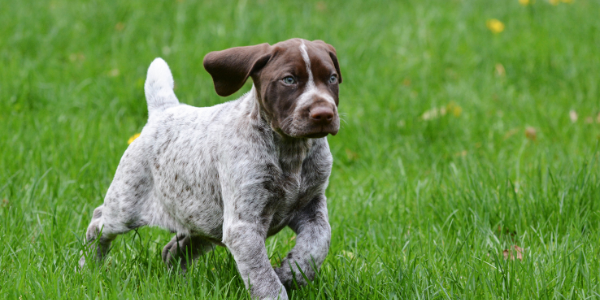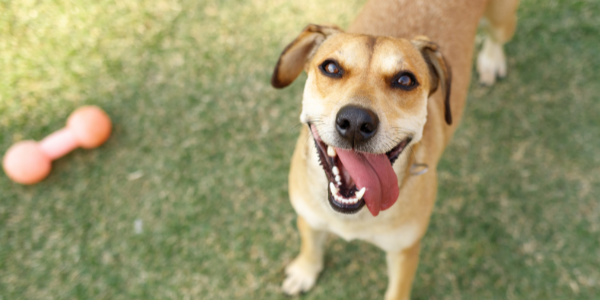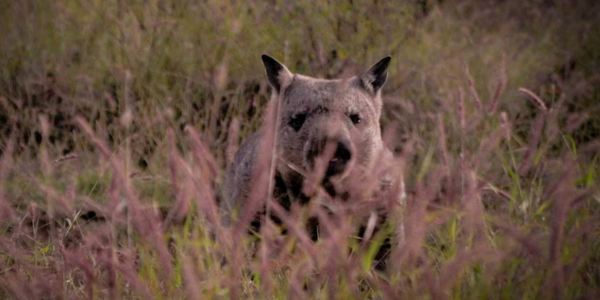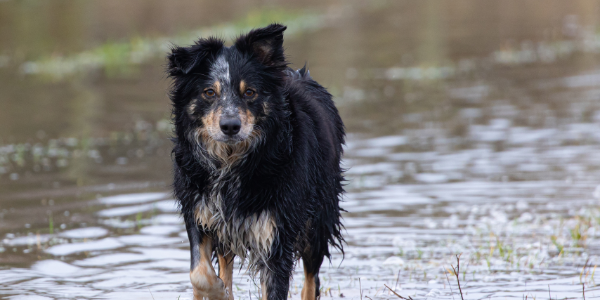| |
|
|
| |
Mira Mar Veterinary Hospital
|
|
| |
|
|
| |
|
|
| |
|
|
|
|

|
| |
April Newsletter
|
|
| |
|
|
| |
March is always a busy month at Mira Mar Vets. Not only are Dr Jim and Dr Sara business partners, great vets and awesome people, but they also have birthdays only 3 days apart!
So we wish the happiest of birthday wishes to Dr Jim and Dr Sara, we hope you both had a wonderful day!
This newsletter has some great articles on keeping your pet fit, healthy and in peak condition. We hope you enjoy them! |
|
|
|

|
| |
March Puppy Preschool Graduates
|
|
| |
|
|
| |
It was a small but mighty class who graduated from Puppy Preschool in March! These little champions learned lots of new pup-skills and made new friends.
Well done to Frankie, Gav, Maggie and Maisie on graduating with flying colours!
If you think your pup would like to join our Puppy Preschool, please call the clinic on 9841 5422. |
|
| |
|
|
| |
Call now!
|
|
|
|

|
| |
Building confidence in cats
|
|
| |
|
|
| |
If your cat is a bit shy or anxious, try implementing these purr-fectly feline-friendly tips to help gradually build their confidence.
Play
Did you know that gentle play with your cat is a great way to strengthen your bond with them and bring them out of their shell?
Shy cats can find direct forms of petting or play a little too much. For these cats, it’s great to try more hands-off styles of interaction, such as:
- Using fishing-rod or wand style toys
- Providing them with cardboard boxes with small holes cut out, so that they can spy on you and poke out a paw to grab dangling toys
- Gently rolling ping-pong balls, scrunched paper balls, or treats near them
- Getting them to chase a laser pointer, provided you give them something to physically “catch” at the end to indicate the game is over (e.g. a small light toy or treat)
Hiding spots
Providing nervous kitties with safe hiding spots to retreat to when required can help them to gain confidence and adapt better to their environment.
Dedicated feline quiet time zones could involve:
- Cat igloos placed on high furniture or beds
- Cupboard doors left slightly ajar, with some comfy bedding inside
- Quiet rooms zoned off from dogs or small children with a baby gate
Supportive supplements and medications
Depending on your cat’s level of nervousness or anxiety, they may benefit from an appropriate calming supplement or medication.
Ask our vets about trialling soothing feline pheromone sprays, safe L-tryptophan or casein supplements, or a prescription anti-anxiety medication. Some medications can be prescribed for “as required” usage (such as prior to vet visits or car trips), whereas particularly anxious cats will benefit from long-term daily medication.
For more tips on bringing your shy feline companion out of their shell, consult our knowledgeable team. |
|
|
|

|
| |
Drizzly dog days
|
|
| |
|
|
| |
Rainy weather doesn’t have to limit the fun for you and your dog! Here’s how to exercise your dog even if the weather is gloomy.
Indoor exercise options
Even in smaller indoor areas, you can still find fun ways to play with your dog. Many pets will love a game of fetch down a hallway, or a vigorous bout of tug-of-war with a tough toy.
Some owners are also able to train their dog to walk or run on a treadmill for an easy indoor exercise option. For safety reasons, pets should be supervised throughout this process and never tied to a moving treadmill. Bear in mind that treadmill sessions shouldn’t regularly replace outdoor walks either, as they don’t provide your dog with the same mental stimulation that comes from sniffing, exploring and socialising with other people and dogs.
Mental stimulation
A good mental work-out can be just as relaxing and enjoyable for your pet as going on a walk. As well as short and sweet obedience training sessions (using lots of treats), you can also help your dog to keep busy indoors with long-lasting dental chews or treat-loaded lick mats or puzzle toys.
For easy DIY sniffing games, you can create a hide-and-seek challenge by hiding treats around a room for your dog to find, or by making a “lucky dip” game for your dog using an old cardboard box, lots of scrunched up paper, and sprinkled treats and toys.
Embracing the weather
Who says that rainy weather has to stop you and your pet from enjoying the great outdoors? You could invest in a well-fitted rain-jacket for your dog (and one for yourself!) and go for a rainy walk to enjoy having free rein of the dog park or beach. Or, if the weather is warm enough, go all in and take your pet swimming in a safe shallow area – they’re getting wet anyway, right?
For more tips on dog health and fitness, ask our exercise-educated team. |
|
|
|

|
| |
Lola’s sticky situation
|
|
| |
|
|
| |
(This fictional story is for educational purposes only and does not depict a real pet, owner, or clinic. It highlights the risks of using sticks as a throw toy, and the possible injuries that may result.)
Lola the four-year-old German shorthaired pointer LOVED to play fetch. Whenever her owner Marc arrived home, Lola would greet him with a wagging tail, holding one of her favourite toys and waiting for him to start the game.
One day off-lead in the park, Lola proudly presented Marc with a big stick to throw for her. Marc obligingly threw it, and the usual high energy game of fetch ensued. All was going well until Lola ran up behind the bouncing stick at high speed and tried to grab it. As Lola lunged forward, the stick caught at an angle in the dirt, resulting in Lola running onto the point of the stick with her open mouth. Lola yelped and jumped back, whining in distress and pawing at her face.
Concerned, Marc ran up and tried to check the dog’s mouth. Whilst Lola resisted him opening her jaws, he could see blood around her clenched teeth and decided to take her to her regular vet immediately for an assessment.
After a short waiting time, the veterinary staff kindly squeezed Lola in for an emergency appointment. Whilst she seemed generally bright and stable, she was still very sore and would not allow the vet to check her mouth either. Marc therefore consented to a sedation so that Lola could receive a proper examination.
Under sedation, Lola was found to have a nasty wound under her tongue, with a few pieces of shredded stick present. Fortunately, the wound in her mouth only extended a couple of centimetres into the tissue, and no other injuries were found. Lola’s wound was flushed out with sterile saline, and the wound stitched closed with dissolving stitch material. She was then started on a course of antibiotics and pain relief and prescribed a soft food diet for the next week.
Fortunately, Lola made a rapid recovery and was back to playing fetch in no time, with a new safety rule: dog toys only! |
|
|
|

|
| |
Feline diabetic dangers
|
|
| |
|
|
| |
Did you know that obese cats are almost four times more likely to develop diabetes compared to those in optimal body condition?
Here’s more about diabetes in cats; including how to recognise it, how it’s treated, and how to reduce your pet’s risk.
Why are obese cats at a higher risk of diabetes?
Rather than being just an inert “spare tyre”, fatty tissue produces hormonally active substances. In overweight cats, their higher amounts of fatty tissue can lead to an imbalance of some key metabolic hormones such as insulin. Insulin is required to help glucose from food pass into cells (where it is used for energy). A deficiency of insulin therefore means the cat’s body struggles to function normally and becomes unwell.
What symptoms does diabetes cause in cats?
Diabetic cats usually show symptoms such as increased drinking and weeing, and weight loss or poor condition despite an increased appetite. Less commonly, they may also develop nerve problems affecting their back legs, leading to weakness and an unusual flat-footed stance.
If a diabetic cat becomes unwell with another disease, they can be at risk of suddenly deteriorating into a life-threatening state of dehydration and illness, known as diabetic ketoacidosis.
How is diabetes treated?
Traditionally, cats with diabetes have required management of their condition with insulin injections twice daily, and sometimes also a prescription diet.
In some cases, cats may be able to recover from the condition, although many require insulin treatment for the rest of their life.
Can diabetes in cats be prevented?
You can significantly lower your cat’s risk of developing diabetes by keeping them in their healthiest body condition.
If you’re unsure, we’d recommend measuring your cat’s physique against this chart. If your feline friend appears to be over their ideal weight, it’s best to consult our knowledgeable vets regarding a safe and effective weight loss plan for your pet. |
|
|
|

|
| |
Healthy weight loss for dogs
|
|
| |
|
|
| |
Is your dog a little too “thick around the middle”? Unfortunately, being overweight can shorten your pet’s lifespan and make them more likely to suffer from breathing difficulties, joint and spinal problems, and organ issues such as pancreatitis.
To help our heavier patients lose excess weight to gain quality of life, we’ve compiled our best practical tips for supporting healthy body condition.
Healthy diet
If your pet is overweight, the first step is to honestly assess what additional cheeky snacks they may be receiving from everyone in the household.
If cutting treats by 80-90% yields no weight improvement after four weeks (or if your pet wasn’t receiving treats to begin with), you should then review their food type and portions. Some pets may do well with strictly measured portions of a high-quality prescription weight loss food (dry and/or tinned), whilst others may respond better to a switch to a nutritionally complete and balanced home-cooked style diet. Ask our vets for personalised recommendations on the healthiest options for your pet.
Appropriate exercise
Unfortunately, heavier pets have a higher risk of dangerous overheating or painful joint injuries if they suddenly launch into activities that their bodies just aren’t used to.
If your pet isn’t currently very physically active, it’s a good idea to build up their exercise regime slowly, starting with short walks in cool conditions or gentle paddles in shallow water. If your dog has any pre-existing health conditions (such as hip dysplasia or arthritis), consult with our experienced vets first.
Weight loss
Whilst reality TV may indicate otherwise, it’s safest for overweight pets to lose weight slowly and steadily, as sudden, drastic weight loss can affect organ health. A good target is a loss of 1-2% of your pet’s bodyweight per week.
For more information on helping your pet to enjoy their healthiest and best life, consult our knowledgeable team. |
|
|
|

|
| |
Northern hairy-nosed wombat population sees hopeful recovery
|
|
| |
|
|
| |
Once on the brink of extinction with just 35 individuals in the 1980s, the northern hairy-nosed wombat population has now grown to over 400, thanks to ongoing conservation efforts. A recent milestone saw 15 wombats relocated to the Powrunna State Forest in Queensland to establish a new habitat. “This is another significant step in safeguarding this critically endangered species,” said conservation officer Dave Harper. The discovery of a healthy juvenile wombat at a protected refuge has further raised hopes. Ecologist Andy Howe said, “It’s very gratifying to see this species thriving in a safe environment.” Researchers will continue monitoring the relocated wombats to ensure their adaptation and survival.
Click here to read the full story at ABC News.
Image source: Queensland Department of Environment and Science |
|
|
|

|
| |
Animal News In Brief
|
|
| |
|
|
| |
Soil-borne disease poses risk to pets after Queensland floods
Following the recent Queensland floods, veterinarians have recorded multiple cases of melioidosis, a potentially fatal bacterial disease affecting pets. Dr. Alan Guilfoyle from Townsville said, “Our animals are at risk,” urging pet owners to watch for symptoms like fever, lethargy, and skin sores. The bacteria thrive in wet soil and can infect pets through wounds or inhalation, especially after heavy rainfall and flooding. Local vets are advising pet owners to keep their animals away from muddy water and seek immediate care if they show signs of illness.
Click here for more tips at ABC News.
Dog breed trends shift as Aussies move away from French bulldogs
New pet insurance data shows French bulldogs are no longer among Australia’s top 10 dog breeds. Cavoodles remain in the lead, followed by Labradors and Golden Retrievers. Spoodles and Border Collies also ranked highly, reflecting changing preferences among Aussie dog owners.
Click here to see the full list at News.com.au.
Bride’s wedding turns into ‘Disney fairytale’ when tiny kittens suddenly appear
As Chloé Hayden and her partner exchanged vows, tiny kittens wandered onto the scene, turning their wedding into an unexpected fairytale moment. Guests watched as the kittens roamed around the venue, adding an extra layer of charm to the celebration. Chloé later shared photos on Instagram, capturing the surprise guests who seemed to appear as if on cue. The heartwarming moment quickly gained attention online, with many calling it a real-life Disney movie.
Click here to read the full story at The Dodo. |
|
|
|
| |
This email contains comments of a general nature only and is not intended to be a substitute for professional veterinary advice. Please always consult your vet for specific advice on your pet's individual needs.
All content © Petpack 2025 |
|
|
|
[Footer]
|